MODULE 6 - SECTION 5 - INPUT from the SPINAL CORD
In this module, we will look at the three pathways for input from the spinal cord. Then we will present our slides to identify the same three pathways on them. .
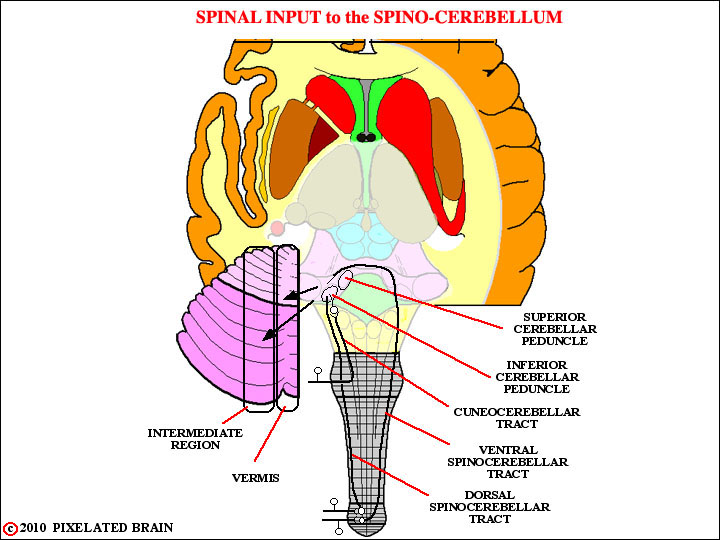
3 PATHWAYS
The following slides will discuss the ventral spinocerebellar tract (VSCT), the dorsal spinocerebellar tract (DSCT), and the cuneocerebellar tract.

Guide to the following slides.
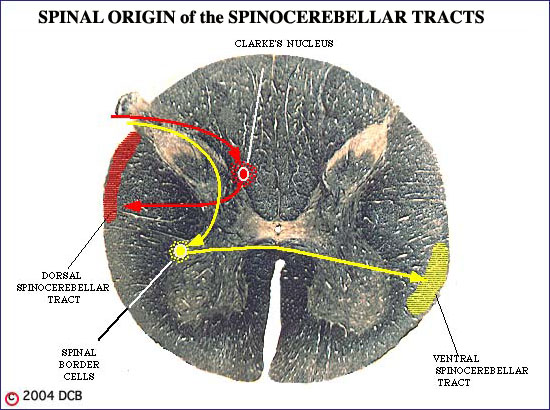
Slide L2
THE DORSAL SPINOCEREBELLAR TRACT (DSCT)
First order neurons associated with muscle spindles, Golgi tendon organs and touch and pressure receptors in the leg send fibers into the cord to terminate in Clarke's Nucleus. Since the nucleus is present only from Ti toL3, afferents from more caudal segments have to ascend in the cord to reach it. Second order neurons within the nucleus send their axons laterally to ascend near the surface of the cord in the posterior part of the lateral funiculus. This pathway sends information about position and movement of the leg to the intermediate zone of the ipsilateral hemisphere.
THE VENTRAL SPINOCEREBELLAR TRACT (VSCT)
Cells on the lateral surface of the anterior horn of the lumbar cord give rise to the ventral spinocerebellar tract. Because of their position, these are called spinal border cells. These second order neurons receive the same inputs as described above for the DSCT, but in addition they receive inputs from a wide variety of cutaneous receptors and from descending motor pathways - primarily, the pyramidal tract. Thus they are "aware" not only of leg position and movement, but also of the motor "commands" that have initiated the movement. The ascending route taken by VSCT is also remarkable, as shown in the first figure of this section. The axons cross the midline to ascend on the contralateral side of the cord and brainstem, then cross back and enter the ipsilateral cerebellar hemisphere traveling with the superior cerebellar peduncle.
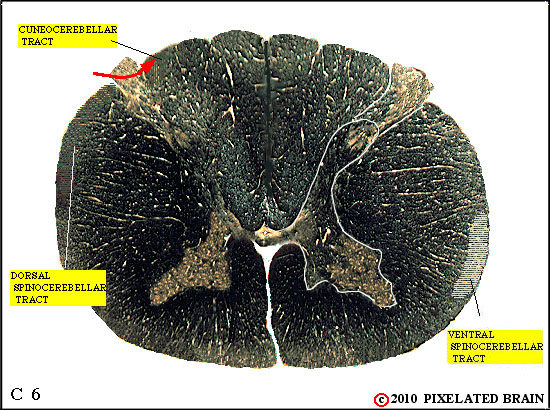
Slide C6
THE CUNEOCEREBELLAR TRACT
At this level the ascending dorsal and ventral spinocerebellar tracts are joined by the cuneocerebellar tract. This pathway conveys to the cerebellum the same sort of information from the arm that the DSCT conveys from the leg. Note that in this case the central process of the first order neuron enters the cervical cord and ascends in the lateral part of the posterior funiculus to synapse on second order neurons in the accessory cuneate nucleus. The first figure of this section shows this but does not label the nucleus.
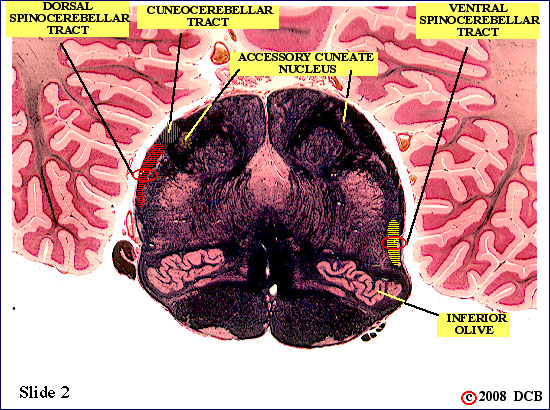
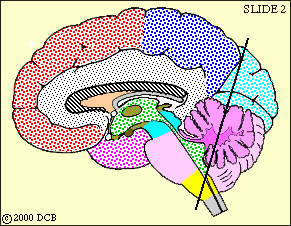 Fibers of the doral and ventral spinocerebellar tracts continue rostrally. Fibers of the cuneocerebellar tract have reached the level of the accessory cuneate nucleus and will synapse on second order neurons of the pathway within it.
Fibers of the doral and ventral spinocerebellar tracts continue rostrally. Fibers of the cuneocerebellar tract have reached the level of the accessory cuneate nucleus and will synapse on second order neurons of the pathway within it.
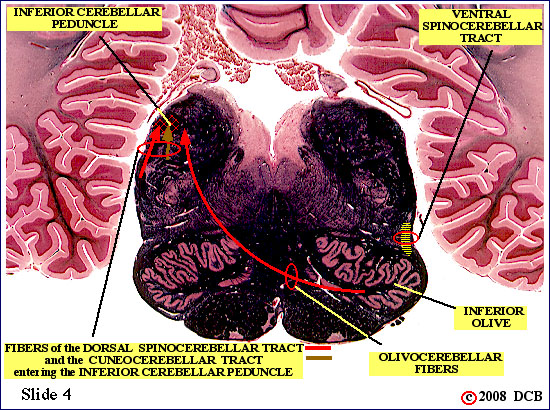
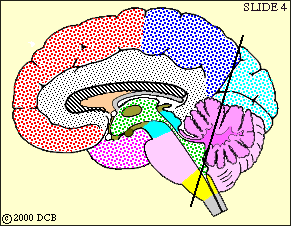
Fibers of the dorsal spinocerebellar tract and the cuneocerebellar tract begin to pile up to form the inferior cerebellar peduncle. They arejoined by fibers from the contralateral inferior olive, which cross the midline. Fibers of the ventral spinocerebellar tract continue to ascend through the lateral medulla.
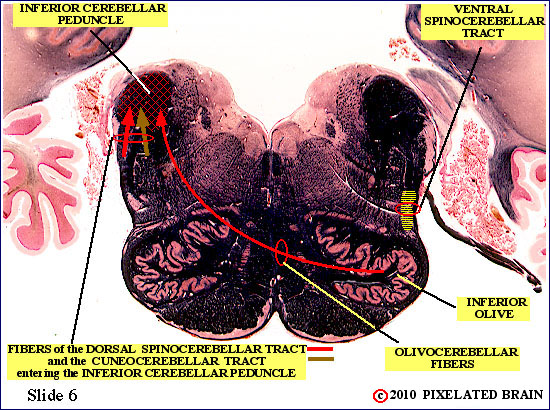
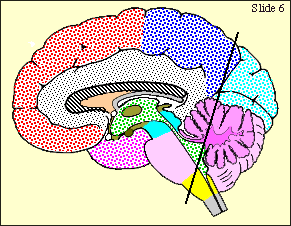
Fibers of the dorsal spinocerebellar tract and the cuneocerebellar tract have now disappeared within the massive inferior cerebellar peduncle. The inferior olive adds a few more fibers to the peduncle. The ventral spinocerebellar tract continues to ascend.
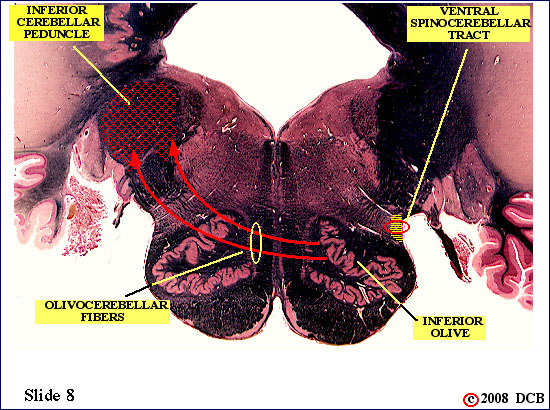
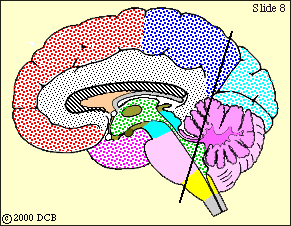
The inferior cerebellar peduncle now moves dorsally to enter the cerebellum.
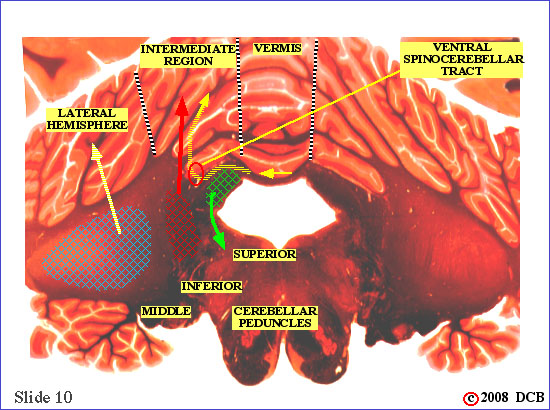

This just show fibers of the middle peduncle approaching the lateral part of the hemisphere and fibers of the inferior peduncle approaching the intermediate region. Most medial of all are the exiting fibers of the superior peduncle.
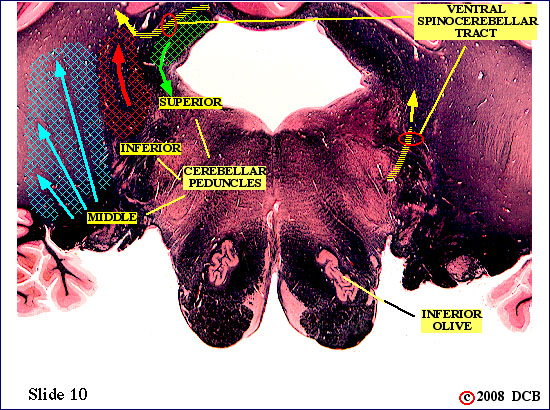

The three cerebellar peduncles are present at this level. Lateral to the inferior peduncle are the fibers of the middle peduncle. Medial to it are the fibers of the superior one. On the contralateral (right) side, fibers of the ventral spinocerebellar tract are moving dorsally, getting ready to "run over the top" of the right superior cerebellar peduncle, cross the midline, and turn caudally "on top of" the left superior peduncle to enter the cerebellum.
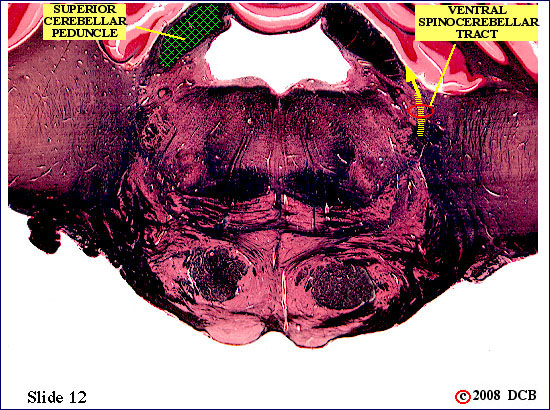

The key thing here is that the ventral spinocerebellar tract is getting ready to cross the midline.
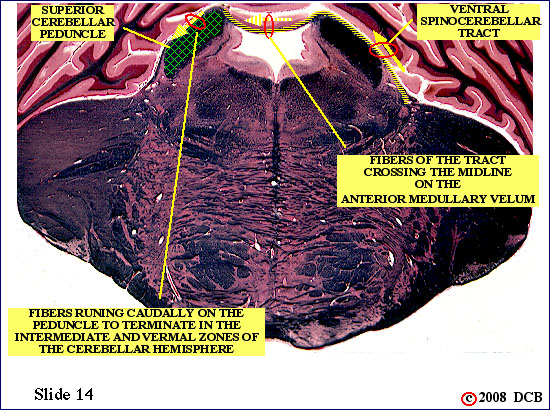
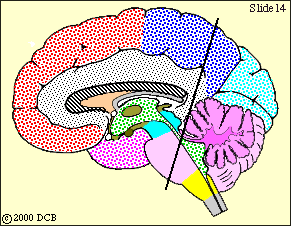
The blue lines in the lower part of the view just remind you of how the middle cerebellar peduncle is formed.
The important thing to note is that at this level the ventral spinocerebellar tract finally crosses the midline a second time to enter the hemisphere that is ipsilateral to where the pathway started.